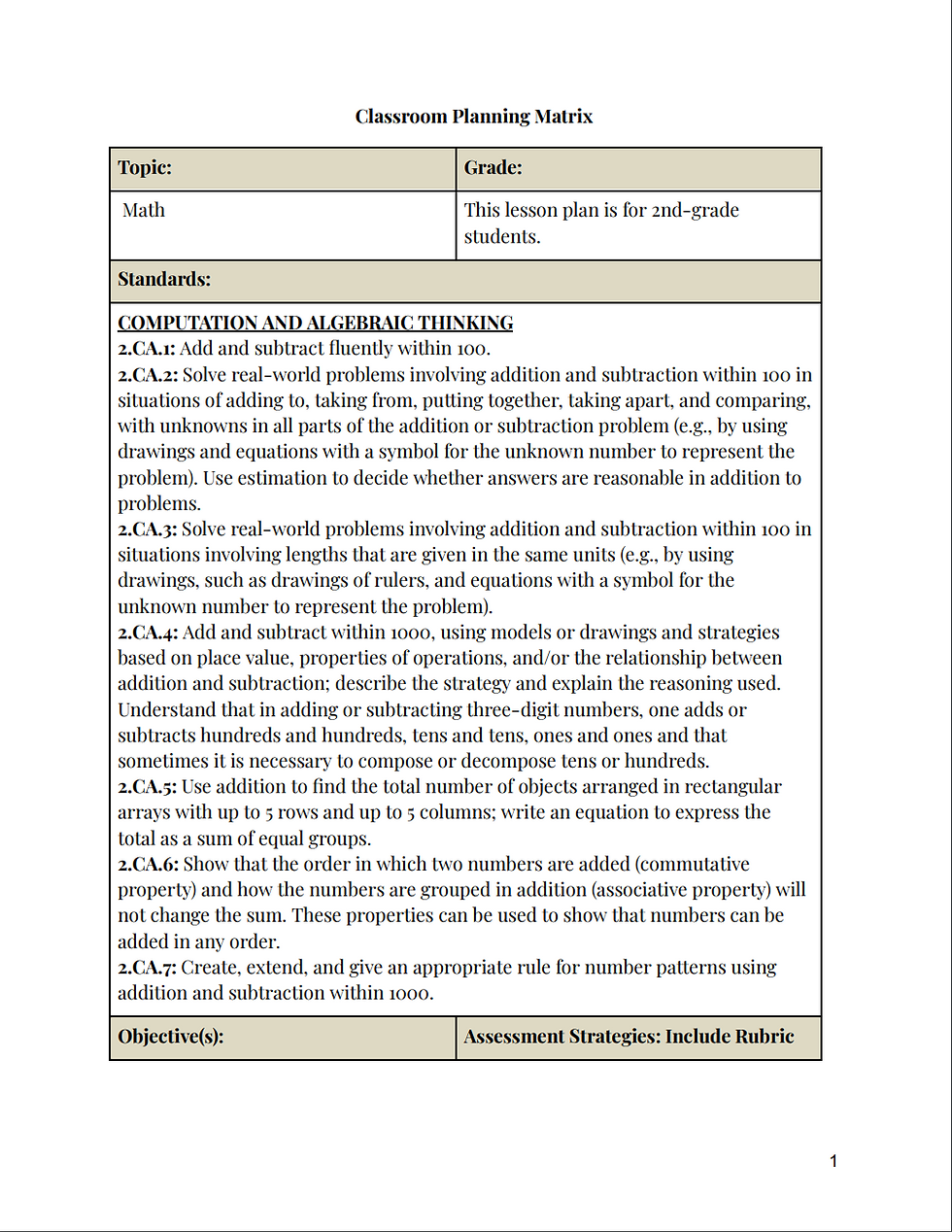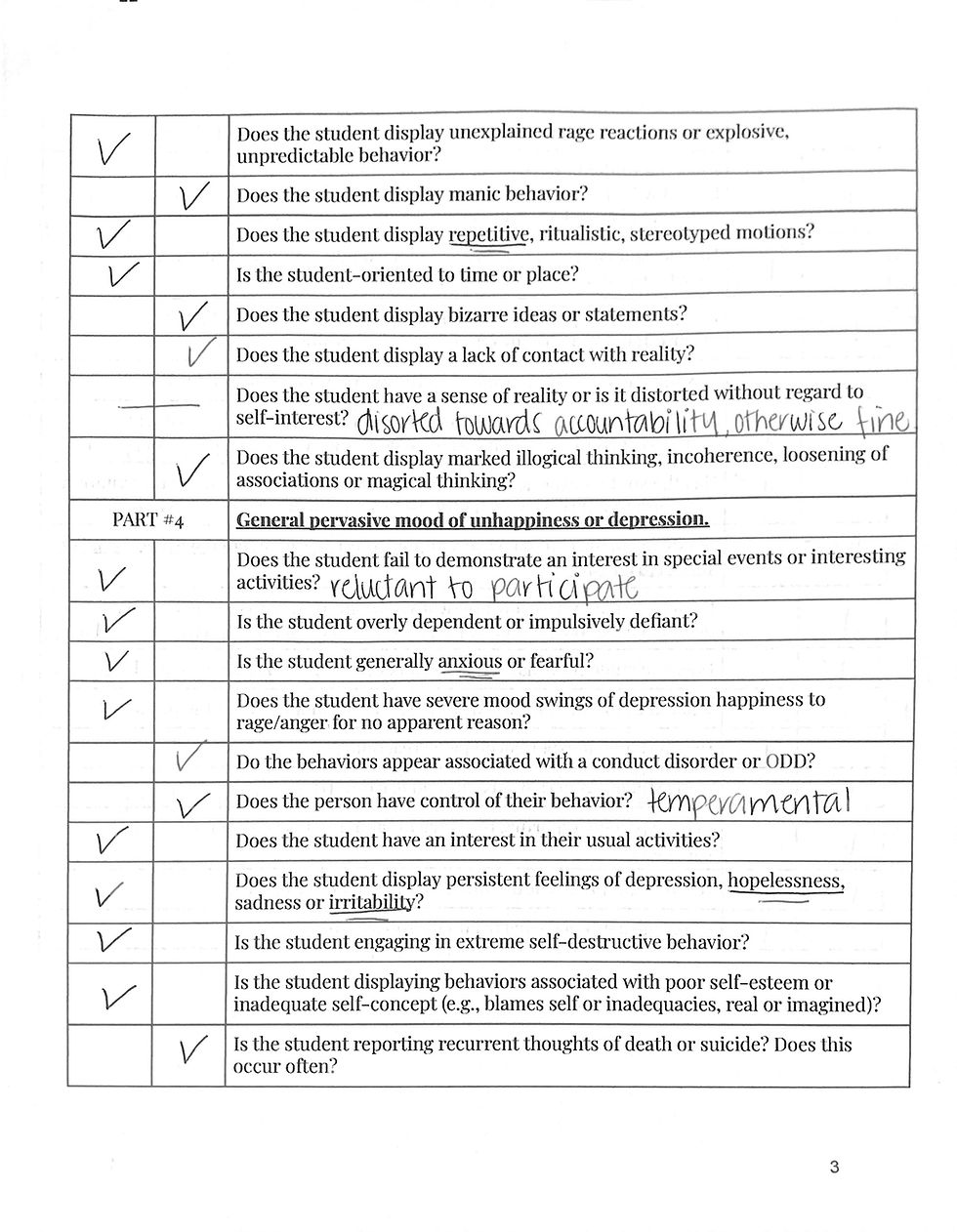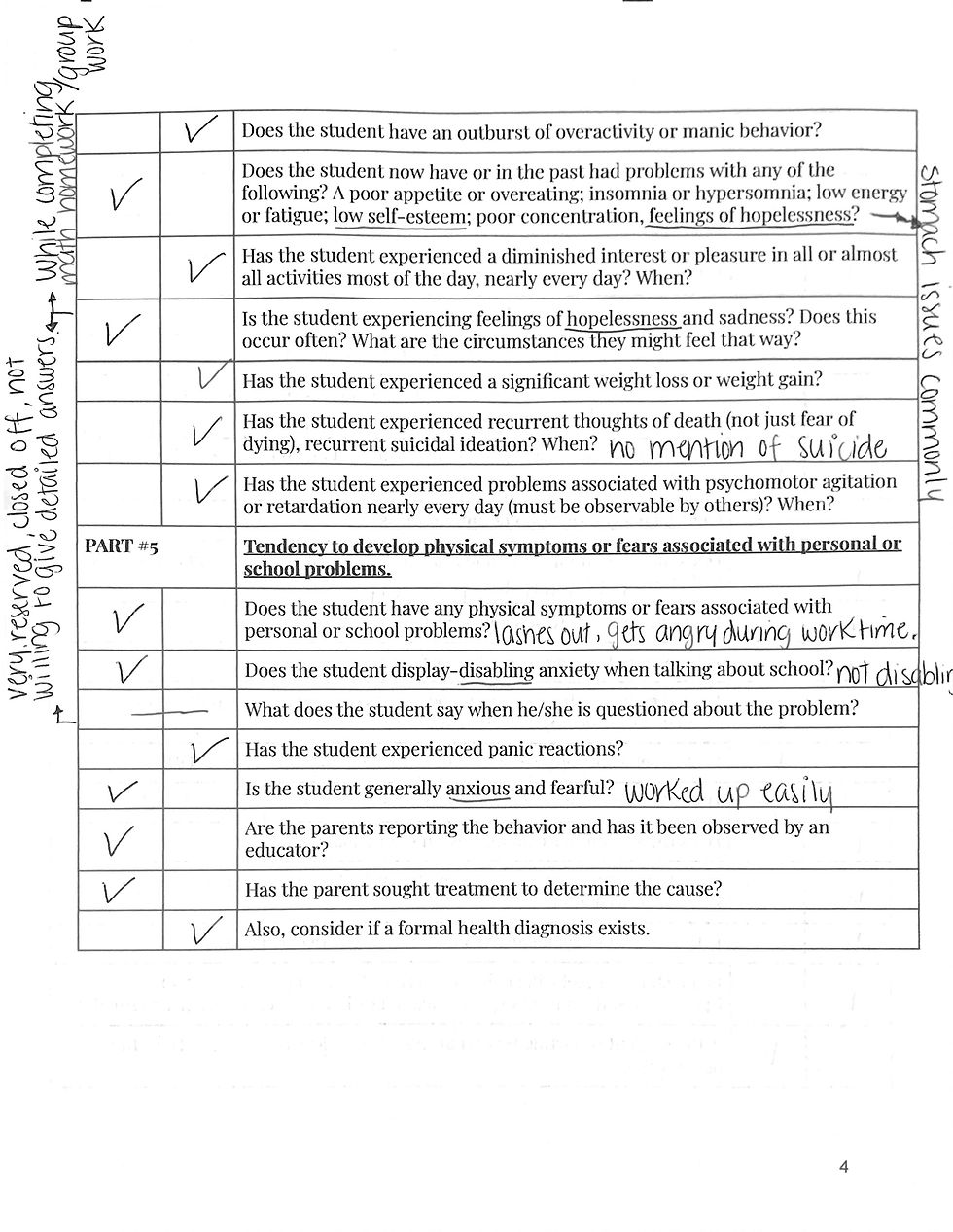

"Every child deserves a champion – an adult who will never give up on them, who understands the power of connection and insists that they become the best that they can possibly be."
InTASC Standard:
Standard #3: Learning Environments
The teacher works with others to create environments that support individual and collaborative learning, and that encourage positive social interaction, active engagement in learning, and self-motivation (InTASC, 2013).
Brief Description of Evidence:
During my spring semester of 2020 in my EDUC 230 - The Exceptional Child course, I participated in multiple simulated conferences as part of a course long group-project. Conference #1, was a parent-teacher conference about a girl called Maria who was falling a little bit behind in school and her biological father died of a heroin overdose. My role was as a guidance counselor. Conference #2 was about a 7-year-old boy named Justin who gets increasingly frustrated with his inability to work at the rate of the other learners, struggles to understand second-grade level math concepts in spite of his seemingly typical cognitive abilities, and had a history of self-harm. We did a simulation of meeting with Justin’s mom and got together a plan which consisted of observing her child, find out what would be the best course of action for her child, and decide which plan would be the best, the IEP Plan or the 504 Plan. My role was as a Psychiatrist. Conference #3 which is our last conference and my role was the Special Education Teacher. We came up with a plan explaining that the best course of action would be the 504 plan and show resources and on how we would help Justin to reach his goals and get better in class.
Conference #1
Conference #2
Conference #3











Analysis of What I Learned:
By conducting three simulated conferences, I understood how to work collaboratively with the student’s family and colleagues to build a safe, positive learning climate of openness, mutual respect, and support for the student. I have gained knowledge on how to help the student to work productively and cooperatively with each other to achieve learning goals. I discovered how the child’s diversity could affect communication and knows how to communicate effectively in differing environments. I learned how to identify an IEP Plan and a 504 plan. I learned the difference between both of them and how to make observations and tests to see which one is the best plan for the student. I provided resources to the parent in each conference.
Conference #1



Conference #2




How This Artifact Demonstrates my Competence on the InTASC Standard:
I am competent in this standard because it shows that I understand how to create a positive and welcoming environment where students are motivated to regulate their behavior. I genuinely feel that I can help students understand what is expected of them; it leads to more positive cooperation with them. By using the resources, observations, and the 504 plan we did in the conferences, I can motivate the student to practice self-direction and assist them in taking ownership of their behavior and learning. This will bring a positive environment and will allow the student to work productively and cooperatively with other children. Having this knowledge also helps me to establish and monitor a safe and productive learning environment because the student will know what he can and cannot do. I can apply Joyce Epstein’s “Family Engagement” Theory (Walden University, 2021) that I’m able to collaborate with others, especially families because it gives the ability to monitor their child's behavior in the classroom environment and make the parents feel involved in their child’s education. I am also aware of how important it is to know what's going on in a child's life outside the classroom that could be affecting their performance.
Conference #3



